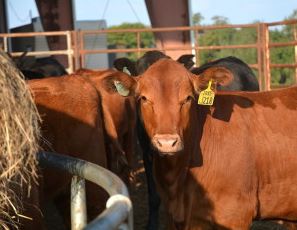



13 Indicators of Profit: Taking Business Applications to the Farm
Texans are embracing key performance indicators (KPIs) to drive profit on their cattle operation - 13 is lucky for some.An extension agent at Texas A&M has recommended 13 KPIs to track pounds weaned, total investment per female and operating expenses, as well as much more.
Stan Bevers says they are "incredibly important" to the success of an operation.
13 KPIs

- Pounds weaned per exposed female.
- Revenue per breeding female.
- Nutrition base expense as a percent of total expenses.
- Labour and management expense as a percent of total revenue.
- Operating expense as a percentage of total revenue.
- Net income ratio.
- Cost per hundredweight of weaned calf.
- Current ratio.
- Total investment per breeding female.
- Debt per breeding female.
- Equity-to- asset ratio or market basis.
- Asset turnover ratio on cost basis.
- Rate of return on assets on market basis.
He said that, while costs fluctuate, the most expensive operational costs for a ranch were depreciation, labour and feed.
“They tend to move around a bit,” Mr Bevers said. “We hear all the time feed is the most expensive cost. But that’s not necessarily true. It’s labor and depreciation. A lot of times we don’t even count or factor in our labor. Now, we are paying twice as much as what we used to for bulls. Depreciation has really jumped up in terms of costs.”
Bevers said 2017 is the target year to be watching for cattle prices to come down.
“We’ve had this record run up in calf prices,” Mr Bevers said. “From an economic standpoint, we know that expenses follow commodity prices. Now that calf prices have kind of been going sideways, we know that in 2016 they could be lower and in 2017 could be lower still.
"That’s the market side of it, but when we look at the financial side of it, expenses always follow commodity prices and they always lag.
“The point is expenses won’t come down as fast as commodity prices. Cow-calf expenses won’t come down as fast as cow-calf prices. 2016 will have lower calf prices but not to the extent it will affect these higher expenses. During 2017, expenses still will not be coming down, where calf prices will be in their second year of decline. That’s what concerns me.”
He added that, if ranchers still need things done in an operation, such as putting in new corrals, new fences, paying down debt or buying a new vehicle, now might be the best time.
“If there is something in the form of a capital asset, get it done in the next 18 months,” he added. “Going into 2017, cash flow could be an issue as calf prices are anticipated to continue to come down.”


